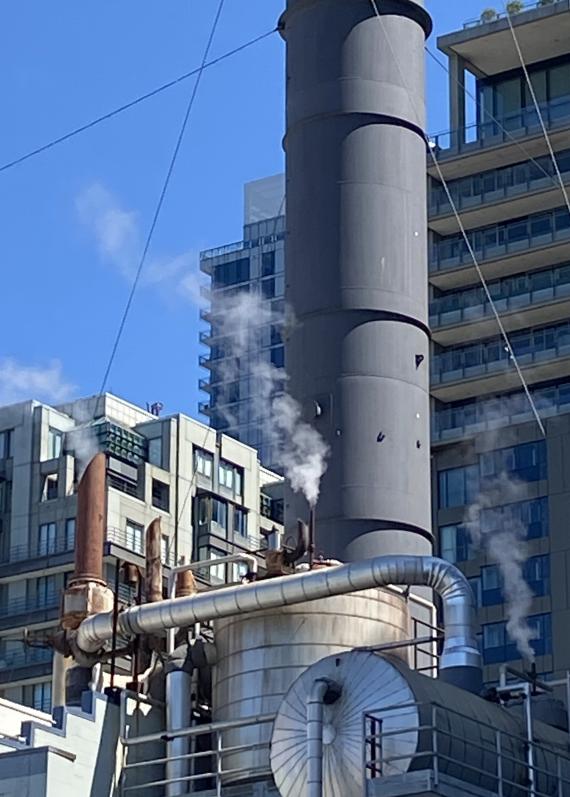Transitioning to clean energy by blowing off steam

by Cynthia Henry
To meet renewable energy goals, GSA needs to disconnect from a very old technology.
In cities across the country, several downtowns, department stores, office buildings, hospitals, hotels, schools, and apartment buildings are heated by a 19th century method: steam carried through networks of underground pipes.
More than 130 years ago, utility companies installed district energy systems—also known as steam loops—in cities like Seattle. Seattle’s network of 18 miles of insulated steel pipes threads its way beneath downtown streets and alleys.
While not an inherently bad system, the Seattle steam loop is powered by polluting fuels: natural gas, diesel oil, and (only slightly cleaner) “hog fuel” — a wood residue and waste product processed through a chipper or mill to produce coarse chips and clumps.
To make matters worse, Seattle’s ancient steam loop also is leaking steam, potentially increasing operating expenses by as much as 33%.
When carbon-based fuels are burned, they release harmful emissions. These emissions pollute our air (think smog and acid rain) and contribute to climate change.
According to the City of Seattle, Seattle buildings are one of the largest and fastest-growing sources of climate pollution, responsible for more than a third of the city’s greenhouse gas emissions, with over 90% of these emissions resulting from burning fossil fuels.
What GSA is Doing
GSA has committed to 100 percent carbon pollution-free electricity sources for its federally owned real estate portfolio by 2030. This is an important first step towards the federal government’s commitment to 100 percent 24/7 CFE by 2035 – and it will require GSA to confront steam loops where they heat our buildings.
Three of GSA’s buildings in downtown Seattle are currently on the steam loop system:
- Henry M. Jackson Federal Building (built in 1974)
- Seattle Federal Office Building (1933)
- William Nakamura U.S. Courthouse (1940)
These three are some of the biggest owned buildings in the R10 portfolio and are prominent in the city.
Transitioning to clean energy for R10’s Seattle federal buildings starts with taking them off the district steam loop and converting them to electric heat pumps with natural gas backups.
“Converting these buildings to all-electric will make the buildings more energy and water efficient. It puts R10 quite far down the road in electrifying its portfolio,” said Dresden Skees-Gregory, PBS R10 Sustainability Program Manager.
GSA plans to partner with a local utility to help fund these conversions through a utility energy service contract (UESC). The utility company will fund upfront costs and be paid back through utility cost savings for a set number of years.

 U.S. General Services Administration
U.S. General Services Administration